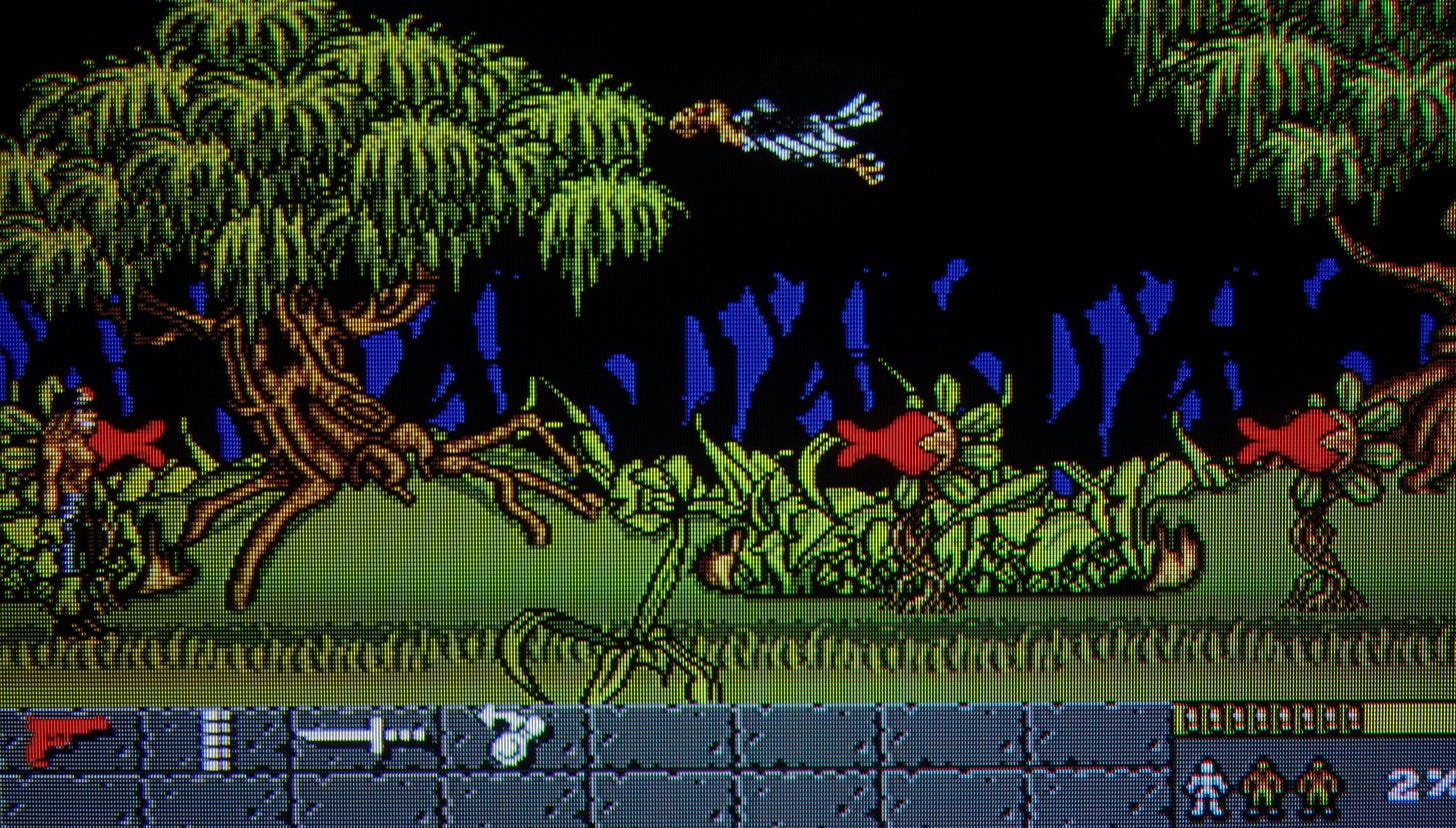[Retro / Amiga] A forum comment led me to this fascinating interview
with David Lawson (in French), of Imagine and Psygnosis fame. He was the designer and programmer on Imagine’s Arcadia, one of the first AAA shoot’em ups I’ve ever played, and Ah Diddums, an innovative / divisive collect’em up, among other titles. After The Fall of Imagine (a gripping tale, featured in my upcoming Amiga book) he co-founded Psygnosis and created some of their early 16-bit games too.
It seems David has moved on from Psygnosis in the late Nineties and joined, or perhaps founded, a studio named Kinetica. They released only one game: The Gold of the Aztecs, and the interview relates mostly to its creation, as well as a mysterious “GDS” engine or design tool used in this process.
This is where things get rather interesting. Consider these quotes (translated from French):
I: How long did it take you to develop this GDS and what does it offer that other game generators don't?
DL: It took me over four years, because it's a highly sought-after module. With it, the whole development phase becomes almost a formality! In fact, the complexity of developing a game is taken care of by the GDS. It manages everything except the sound
I: Is the GDS also involved at this stage?
DL: The GDS comes into play at virtually every level. It was created to remedy the thorniest problem facing games publishers: the cumbersome nature of programming. […] At Kinetica, we don't have programmers. Thanks to the GDS, we only have artists who invent games.
He later on also says how GDS can be used for “virtually any genre”, which overall makes this tool sounds like magic - or what some people envision AI to be in the (near) future.
Of course, if all this sounds too good to be true, that’s because it was - otherwise, Kinetica (and David) wouldn’t disappear from the industry after just that one game. Still, it certainly was an intriguing tool, allowing for some degree of easing the development process in certain genres - most likely the action-adventures like Barbarian, Obliterator or The Gold… itself. If you know anything more about it, I’d love to hear it!
After reading this interview, I simply had to revisit The Gold of the Aztecs, even though it’d be the first times since I played it on Amiga over 3 decades ago, and so the nostalgia barrier could be hard to breach. It was one of my first games on a 16-bit machine, and so I was quite awed by it - the production values, reminiscent of Psygnosis titles, were very high. However, so was the nigh-on impossible difficulty curve. And it’s just as ker-razy now as I remember it from back in the day when, despite being starved for new games, I just couldn’t make any progress in this one.
The game is a flip-screen action adventure, in which you control an Indy Jones-type marine-cum-explorer on his trip to a South American jungle. Or should we say “attempt to control” because the game certainly bears some similarities to Barbarian and Obliterator. Even though there are no menus, like in these games, controlling your character in The Gold of the Aztecs is still far from straightforward, and has defeated me again - I only made it to the 3rd screen.

In fact, perhaps a more fitting comparison would be the infamous control scheme from Brataccas, another title Lawson worked on. In this game it is not as bad, but still… the character moves in strides, not steps, and makes wild leaps and somersaults, which are hard to gauge. Shooting requires stopping and pulling your gun, and if you want to resume moving, you have to holster it first. All this while combating respawning natives, and dealing with jungle wildlife hell-bent on killing you. And here’s the icing on the cake: if you die, you go back to the first screen. Arrrgh!
It’s a pity, because The Gold of the Aztecs is very impressive visually and has some neat gameplay design ideas (it also reminds me of Aztec, an innovative title from the 8-bit era).
There’s a short intro and on the title screen you can watch an impressive animation of some scary deity being worshipped by the Aztecs (I presume). On the first screen in game, after freeing yourself from the parachute, you’ll have to shoot some natives to survive. But there’s also an elephant on the edge of the screen, and if you hit him too, he’ll rush in and stomp you to death.
Such details make this game stand out from the rather busy crowd, and so, perhaps it’s worth persevering and mastering the control scheme after all (again, a deja vu sentence I recall writing about Brataccas). Try it yourself, perhaps you’ll do better than me. And spare a thought for Mr. Lawson, who has passed in August 2022. He was certainly one of the early gaming pioneers, and perhaps his vision for the GDS bears some resemblance to multipurpose modern-retro game engines such as Scorpion.
Beyond Nostalgia will return soon with a more news-oriented edition. Stay tuned!







